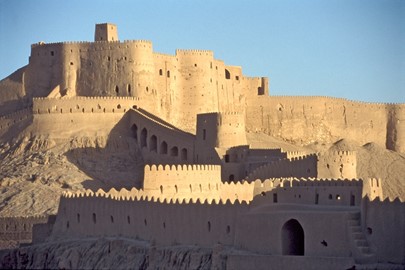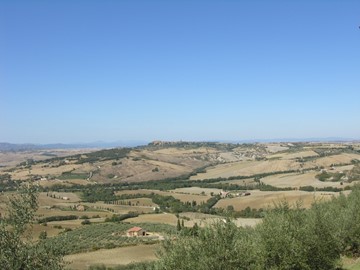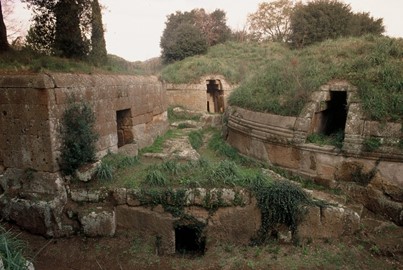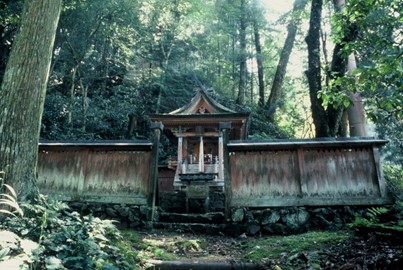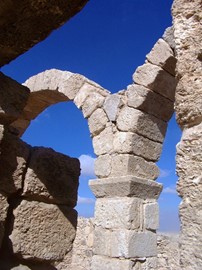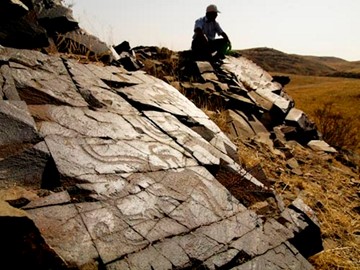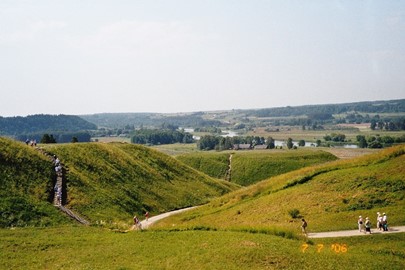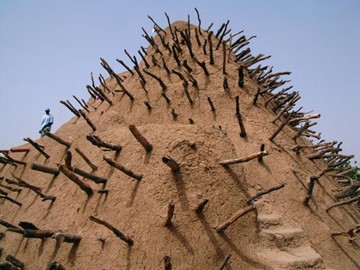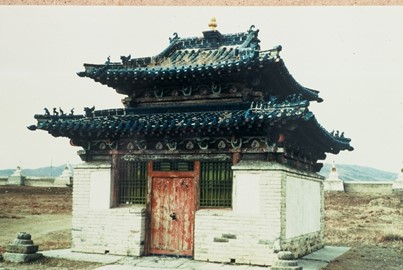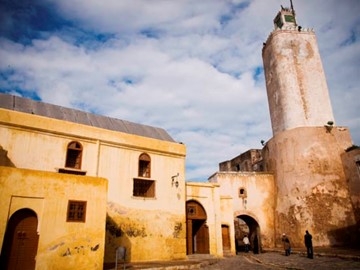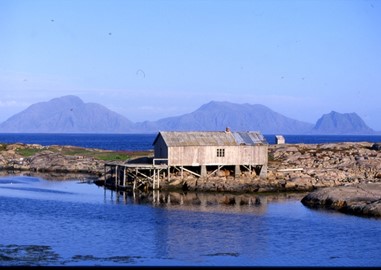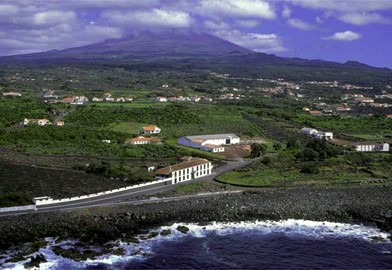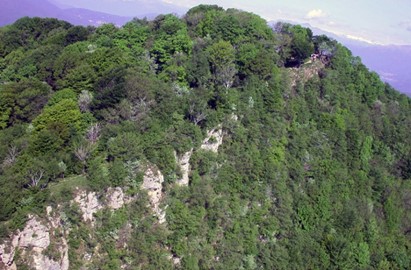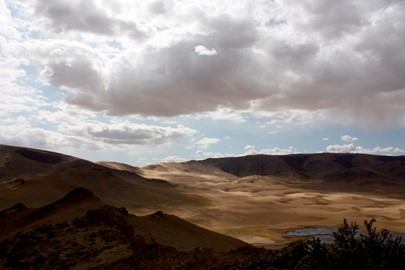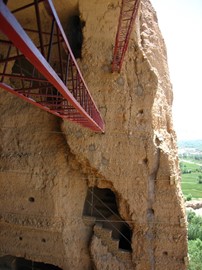search
Bam
Bam Cultural Landscape, a UNESCO World Heritage site in Iran, showcases a remarkable example of an ancient qanat irrigation system integrated with traditional desert architecture. This historic oasis features the well-preserved Arg-e Bam citadel, a sprawling mud-brick fortress, alongside date palm groves and gardens sustained by underground water channels. Recognized for its cultural and historical significance, it reflects centuries of human ingenuity in adapting to an arid environment.
Val d'Orcia
Val d’Orcia, a UNESCO World Heritage site in Italy, exemplifies a harmonious blend of Renaissance agricultural planning and picturesque Tuscan scenery. This cultural landscape features rolling hills, vineyards, olive groves, and medieval villages like Pienza and Montalcino, shaped by centuries of human cultivation. Its distinctive beauty, immortalized in art and literature, highlights an enduring relationship between people and nature.
Etruscan Necropolises
The Etruscan Necropolises, a UNESCO World Heritage site in Italy, represent an extraordinary collection of ancient burial sites showcasing the sophisticated culture of the Etruscan civilization. These well-preserved tombs, adorned with intricate frescoes, carvings, and architectural features, offer insights into Etruscan beliefs, art, and daily life from the 9th to 1st centuries BCE. Recognized for their historical and archaeological value, they highlight a unique pre-Roman legacy in the Mediterranean.
Kii Mountain
The Sacred Sites and Pilgrimage Routes in the Kii Mountain Range, a UNESCO World Heritage site in Japan, encompass a network of ancient Shinto shrines, Buddhist temples, and forested trails. This spiritual landscape highlights the fusion of Shinto and Buddhist traditions, with key sites like Yoshino, Omine, and Koya connected by historic pilgrimage paths. Recognized for its cultural and religious importance, it reflects centuries of devotion and harmony with nature.
Um er Rasas
Um er-Rasas, a UNESCO World Heritage site in Jordan, is an ancient archaeological site renowned for its well-preserved Roman, Byzantine, and early historical ruins. The site features a fortified Roman military camp, several churches with intricate mosaic floors, and a unique blend of cultural influences from successive civilizations. Its historical significance lies in its representation of architectural and artistic achievements across centuries.
Tamgaly
The Archaeological Landscape of Tamgaly, a UNESCO World Heritage site in Kazakhstan, is renowned for its vast collection of ancient rock carvings and archaeological remains. This site features over 5,000 petroglyphs, depicting hunting scenes, animals, and human figures, dating back to the Bronze Age and later periods. Scattered across a rugged terrain, it includes burial sites and settlements that highlight prehistoric cultural practices. It stands as a testament to the artistic and historical legacy of ear... Read More
Kernavė
Kernavė, a UNESCO World Heritage Site in Lithuania, is an exceptional archaeological reserve showcasing the cultural and historical evolution of human settlements over thousands of years. It features ancient hillforts, burial sites, and remnants of medieval towns, reflecting the region's rich heritage and continuity of human activity.
Tomb of Askia
The Tomb of Askia, a UNESCO World Heritage site in Mali, is a striking 15th-century mud-brick pyramid built by Emperor Askia Mohammad I as his mausoleum. This architectural marvel, featuring a stepped design and wooden protrusions for structural support, exemplifies West African Sahelian style and reflects the region’s historical Islamic influence. It served as a royal tomb and mosque, symbolizing the power of the Songhai Empire during its peak. Today, it stands as a testament to Mali’s rich cultural herita... Read More
Luis Barragán House and Studio
The Luis Barragán House and Studio, a UNESCO World Heritage site in Mexico, is a masterful example of modern architecture designed by the renowned architect Luis Barragán between 1947 and 1948. This iconic residence showcases his innovative use of color, light, and space, blending traditional Mexican elements with minimalist design. Preserved as a museum, it offers insight into Barragán’s creative process and remains a testament to his lasting influence on global architecture.
Orkhon Valley
The Orkhon Valley, a UNESCO World Heritage site in Mongolia, is a historically and culturally significant region showcasing the evolution of nomadic pastoral traditions over more than two millennia. It features ancient archaeological remains, including the 6th-century Turkic memorials, the 8th-century Orkhon inscriptions—the oldest known Turkic writings—and the 13th-century capital of the Mongol Empire, Karakorum. The landscape, encompassing grasslands, rivers, and mountains, reflects the enduring relations... Read More
Mazagan (El Jadida)
Mazagan, also known as El Jadida, is a UNESCO World Heritage site in Morocco, recognized for its well-preserved Portuguese fortified city from the 16th century. This coastal settlement showcases a unique blend of European and Moroccan architectural influences, highlighted by its impressive ramparts, bastions, and cistern. Established as a trading post in 1502, it reflects early Renaissance urban planning and military design, making it a significant historical and cultural landmark. Today, it stands as a tes... Read More
Vegaøyan
Vegaøyan – The Vega Archipelago is a UNESCO World Heritage site in Norway, recognized for its unique cultural landscape shaped by generations of fishermen and farmers. Located near the Arctic Circle, it showcases a sustainable way of life based on fishing and the traditional harvesting of eider duck down, a practice dating back over 1,500 years. The site features fishing villages, quays, eider houses, and lighthouses, reflecting human resilience in a harsh environment and the significant role of women in th... Read More
Pico Island
The Pico Island Vineyard Culture, a UNESCO World Heritage site in Portugal, showcases a unique landscape shaped by centuries of traditional viticulture on a volcanic island. Its distinctive network of black basalt stone walls protects vines from harsh sea winds and salt spray, creating a microclimate for grape cultivation in nutrient-rich lava soil. This ingenious adaptation by generations of farmers, along with historic wine cellars, manor houses, and churches, reflects a remarkable blend of human resilien... Read More
Wrangel Island
Wrangel Island, a UNESCO World Heritage site in Russia, is a remote Arctic sanctuary renowned for its exceptional biodiversity and paleontological significance. Located in the Chukchi Sea, it serves as a critical habitat for polar bears, walruses, and migratory birds, while also hosting one of the world’s largest populations of Pacific walrus. The island’s pristine ecosystem, untouched by glacial activity during the last Ice Age, preserves ancient flora and fauna, offering a unique glimpse into the Pleistoc... Read More
Novodevichy Convent
The Novodevichy Convent, a UNESCO World Heritage site in Russia, is a historic fortified monastery founded in 1524 by Grand Prince Vasili III to commemorate the conquest of Smolensk. Renowned for its striking architecture, the convent features a blend of Moscow Baroque style with its golden-domed churches, whitewashed walls, and ornate frescoes, reflecting centuries of Russian Orthodox heritage. It served as a religious and cultural center, housing noblewomen and playing a significant role in the country's ... Read More
Pitons Management Area
This World Heritage site in Saint Lucia encompasses a stunning volcanic landscape featuring two towering spires—Gros Piton and Petit Piton—rising dramatically from the sea, surrounded by lush tropical forests and vibrant coral reefs. Spanning 2,909 hectares, it includes a geothermal field with sulphur springs and fumaroles, showcasing the region’s volcanic history and natural beauty. Recognized by UNESCO in 2004, the area supports diverse ecosystems with endemic species and offers breathtaking views, making... Read More
Kosovo Medieval Monuments
The Medieval Monuments in Kosovo, a UNESCO World Heritage site in Serbia, encompass four exceptional examples of Byzantine and Orthodox Christian architecture from the 13th to 17th centuries. These include the Patriarchate of Peć Monastery, Gračanica Monastery, Our Lady of Ljeviš church, and Dečani Monastery, each renowned for their well-preserved frescoes, intricate stonework, and historical significance. They collectively represent the rich cultural and religious heritage of the Serbian Orthodox Church du... Read More
Cape Floral Region
The Cape Floral Region, a World Heritage site in South Africa, is renowned for its exceptional biodiversity and unique fynbos vegetation, a type of shrubland found nowhere else on Earth. This region hosts an astonishing variety of plant species, with over 9,000 types, many of which are endemic, making it one of the planet’s richest floral kingdoms. It also encompasses dramatic landscapes, including rugged mountains and coastal plains, which support a delicate ecosystem recognized for its global ecological s... Read More
Grimeton Radio Station
Grimeton Radio Station, a UNESCO World Heritage site in Sweden, is a remarkably preserved early 20th-century long-wave radio station, operational since 1924. Built under the direction of engineer Ernst Alexanderson, it showcases pioneering technology with its massive Alexanderson alternator, capable of transatlantic communication. Today, it serves as a historical monument and museum, offering insight into the development of global telecommunications. Its unique industrial architecture and functional equipme... Read More
Koutammakou
Koutammakou, the Land of the Batammariba, is a UNESCO World Heritage site located in northeastern Togo, recognized in 2004 for its unique cultural landscape. It is home to the Batammariba people, who are renowned for their distinctive mud tower-houses, known as takienta, which serve as both homes and symbols of Togo’s heritage. These structures, often two stories with flat or conical roofs, reflect the community’s social structure and harmonious relationship with nature, deeply tied to their rituals and bel... Read More
Dresden Elbe Valley
The Dresden Elbe Valley, a UNESCO World Heritage site in Germany, is renowned for its stunning cultural landscape, blending natural beauty with architectural splendor. This picturesque valley features historic landmarks like the Dresden Castle, Zwinger Palace, and Semper Opera House, set against the serene Elbe River and lush vineyards. Recognized for its universal value, it showcases centuries of artistic and urban development, making it a significant testament to European heritage.
Liverpool – Maritime Mercantile City
Liverpool – Maritime Mercantile City, a UNESCO World Heritage site in the UK, is renowned for its historic waterfront, showcasing a rich legacy of trade and cultural exchange. Its iconic docks, warehouses, and merchant buildings reflect its pivotal role as a global port during the 18th and 19th centuries. The site includes notable landmarks like the Royal Liver Building and the Albert Dock, blending architectural grandeur with historical significance. This designation highlights its contribution to maritime... Read More
Monte San Giorgio
Monte San Giorgio, a UNESCO World Heritage site in Italy and Switzerland, recognized in 2003 and extended in 2010, is a pyramid-shaped mountain renowned for its Triassic fossil deposits, dating back 245-230 million years. Its well-preserved marine reptiles, fish, and plants, unearthed from ancient lagoon beds, offer a global benchmark for paleontology. This transnational site reflects the region’s geological heritage, showcasing a prehistoric underwater world frozen in time across borders.
Uvs Nuur Basin
Uvs Nuur Basin, a UNESCO World Heritage site in Russia, recognized in 2003, is a vast, remote depression in southern Siberia encompassing Mongolia’s largest lake and diverse ecosystems from deserts to tundra. Home to rare species like the snow leopard and hosting ancient burial mounds, it reflects a unique convergence of natural and cultural history. This transboundary site showcases Russia’s ecological and archaeological richness, preserving a pristine landscape shaped by extreme climates.
Bamiyan Valley
Bamiyan Valley, a UNESCO World Heritage site in Afghanistan, recognized in 2003 and listed as World Heritage in Danger, is an ancient cultural landscape famed for its colossal Buddha statues, carved into cliffs between the 4th and 6th centuries CE, though destroyed in 2001. Nestled in a high valley, its caves, monasteries, and Silk Road relics reflect a blend of Greco-Buddhist art and medieval Islamic heritage. This site showcases Afghanistan’s rich historical tapestry, preserving a poignant legacy amid ong... Read More
